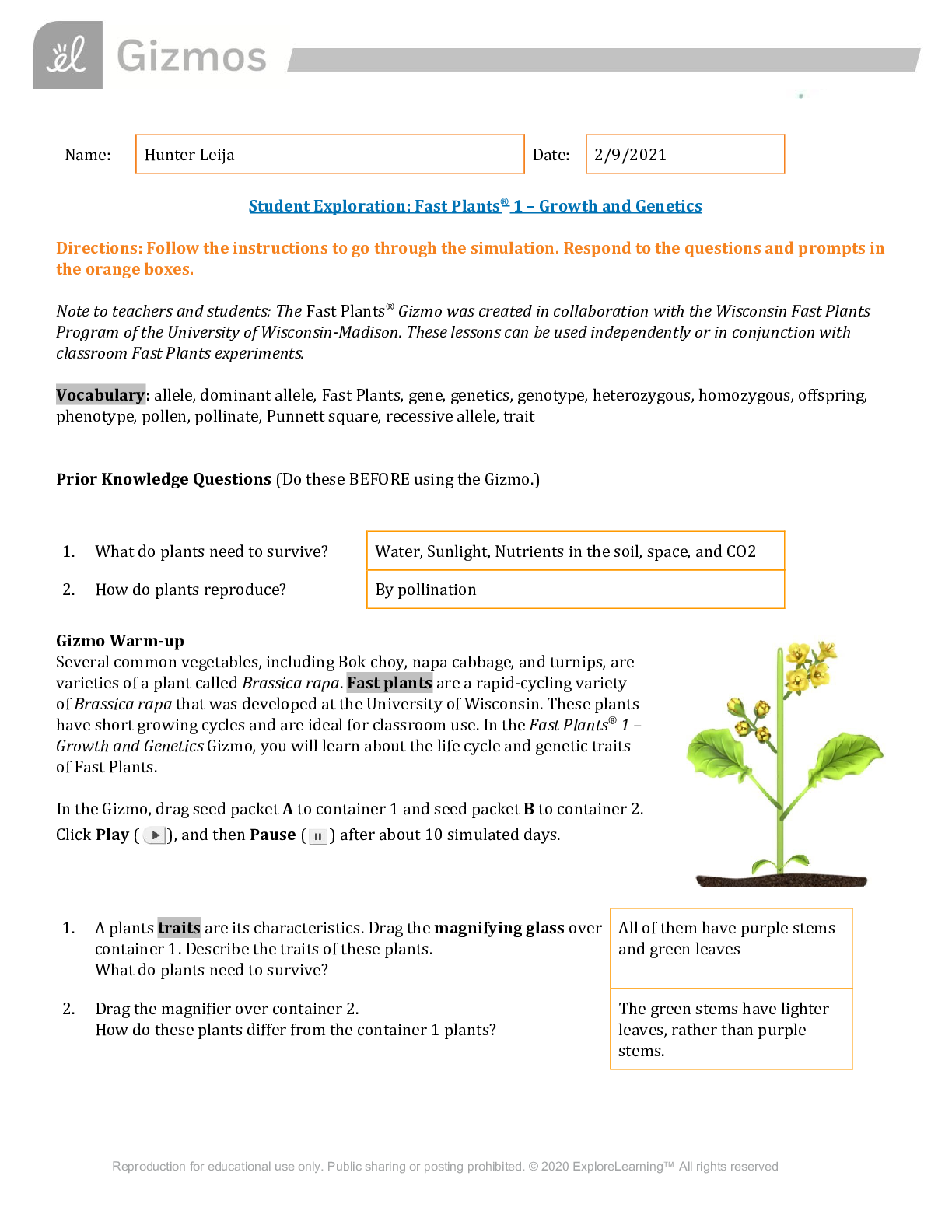SCIENCE 101 > GIZMOS > Student Exploration: Human Evolution - Skull Analysis Gizmo (All)
Student Exploration: Human Evolution - Skull Analysis Gizmo
Document Content and Description Below
Name: Date: Student Exploration: Human Evolution - Skull Analysis Directions: Follow the instructions to go through the simulation. Respond to the questions and prompts in the orange boxes. Voc... abulary: bipedal, canine, cranial capacity, cranium, evolve, foramen magnum, hominid, hominin, index, maxilla, orbit, palate, skull Prior Knowledge Questions (Do these BEFORE using the Gizmo.) 1. Label one of the skulls below as human and the other as a chimpanzee skull. 2. What features did you use to identify which skull was human and which was chimpanzee? Gizmo Warm-up In 1924, a fossilized skull that looked very similar to a chimp skull was discovered. But the skull most definitely did not belong to a chimp. The location of the foramen magnum—a hole in the skull where the spinal cord exits—indicated that the individual was bipedal, or walked on two legs. This fossil was some of the earliest evidence of human evolution. Using the Human Evolution – Skull Analysis Gizmo, you will discover some of the ways that skulls can be used to learn about human evolution. Start by comparing two modern hominids: a human and a chimpanzee. 1. Examine the Front view of the Homo sapiens (modern human) skull. Then, use the Select skull menu to examine the same view of the Pan troglodytes (chimp) skull. How do the skulls compare? 2. Now, examine the Bottom view of the two skulls. How do they compare? Activity A: Foramen magnum Get the Gizmo ready: ● Select the Homo sapiens (modern human) skull. Introduction: Skulls, even from the same species, can have a wide variety of shapes and sizes. To compare skulls, scientists use measurements of certain features to calculate indexes. An index is a ratio of one measurement to another. An important index for measuring hominid skulls is the opisthion index. This index indicates the position of the foramen magnum in the base of the cranium. The opisthion index can indicate whether a hominid species was bipedal or not. Question: How does the location of the foramen magnum indicate if a species was bipedal? 1. Measure: Select the Bottom view. To determine the opisthion index for humans and chimps, follow the steps below and complete the table. ● Turn on Click to Measure Lengths. Measure the distance from the opisthocranion to the opisthion, as shown at top right. Record the opisthocranion-opisthion distance in the table below. ● Measure from the opisthocranion to the orale, as shown at bottom right. Record the opisthocranion-orale distance in the table. ● To calculate the opisthion index, divide your first measurement by your second measurement. Multiply this number by 100. Species Opisthocranion-opisthi on distance (cm) Opisthocranion-ora le distance (cm) Opisthion index Homo sapiens Pan troglodytes 2. Analyze: The opisthion index is an indicator of where the foramen magnum is situated. The greater the opisthion index, the closer the foramen magnum is to the center of the cranium. This position is usually found in species that stand upright. A low value for the opisthion index occurs when the foramen magnum is situated in the rear of the cranium. This may indicate that the species walked on its knuckles or on four legs. Using the index values you calculated, what can you conclude about humans and chimps? 3. Gather data: Humans, chimpanzees, and the other great apes are hominids. Hominids evolved from a common ancestor that lived about 13 million years ago. Hominins are hominids that belong to the lineage that led to humans. Measure the opisthion index of the other hominids available in the Gizmo. (Note: the foramen magnum was not preserved in the Homo naledi skull.) Species Opisthocranion-opisth ion distance (cm) Opisthocranion-ora le distance (cm) Opisthion index A. afarensis A. africanus P. boisei H. habilis H. erectus H. heidelbergensis H. sapiens neanderthalensis H. floresiensis 4. Analyze: Hominins are characterized by bipedalism. A. Based on their opisthion indexes, which of the hominids in the Gizmo are hominins? B. Based on opisthion indexes, which hominin skulls are most similar to human skulls? 4. Explain: Why do you think the foramen magnum is positioned near the rear of the cranium for knuckle-walking species and near the center of the cranium for bipedal species? Activity B: Cranial capacity Get the Gizmo ready: ● Select Side view. ● Turn off Ruler, and turn on Click to measure area. Introduction: The brain is housed inside the cranium. The internal volume of the cranium is called the cranial capacity. The larger an organism’s cranial capacity is, the larger its brain tends to be. Question: How does the cranial capacity compare amongst hominids? 1. Measure: To estimate the cranial capacity of each skull in the Gizmo, measure the area of the part of the cranium that houses the brain. This part of the cranium is roughly behind the red line in the diagram at right. You can also use the three skull images below as a guide for measuring the rest of the skulls in the Gizmo. After you measure the area of each cranium, multiply the result by 5. This will give you a very rough estimate of the species’ cranial capacity. Homo sapiens Pan troglodytes Australopithecus afarensis Species Area of cranium (cm2) Estimated cranial capacity (cm3) Pan troglodytes A. afarensis A. africanus P. boisei H. habilis H. erectus H. heidelbergensis H. s. neanderthalensis H. floresiensis H. naledi H. sapiens ......................................................................................................continued.................................................................................................... [Show More]
Last updated: 1 year ago
Preview 1 out of 9 pages
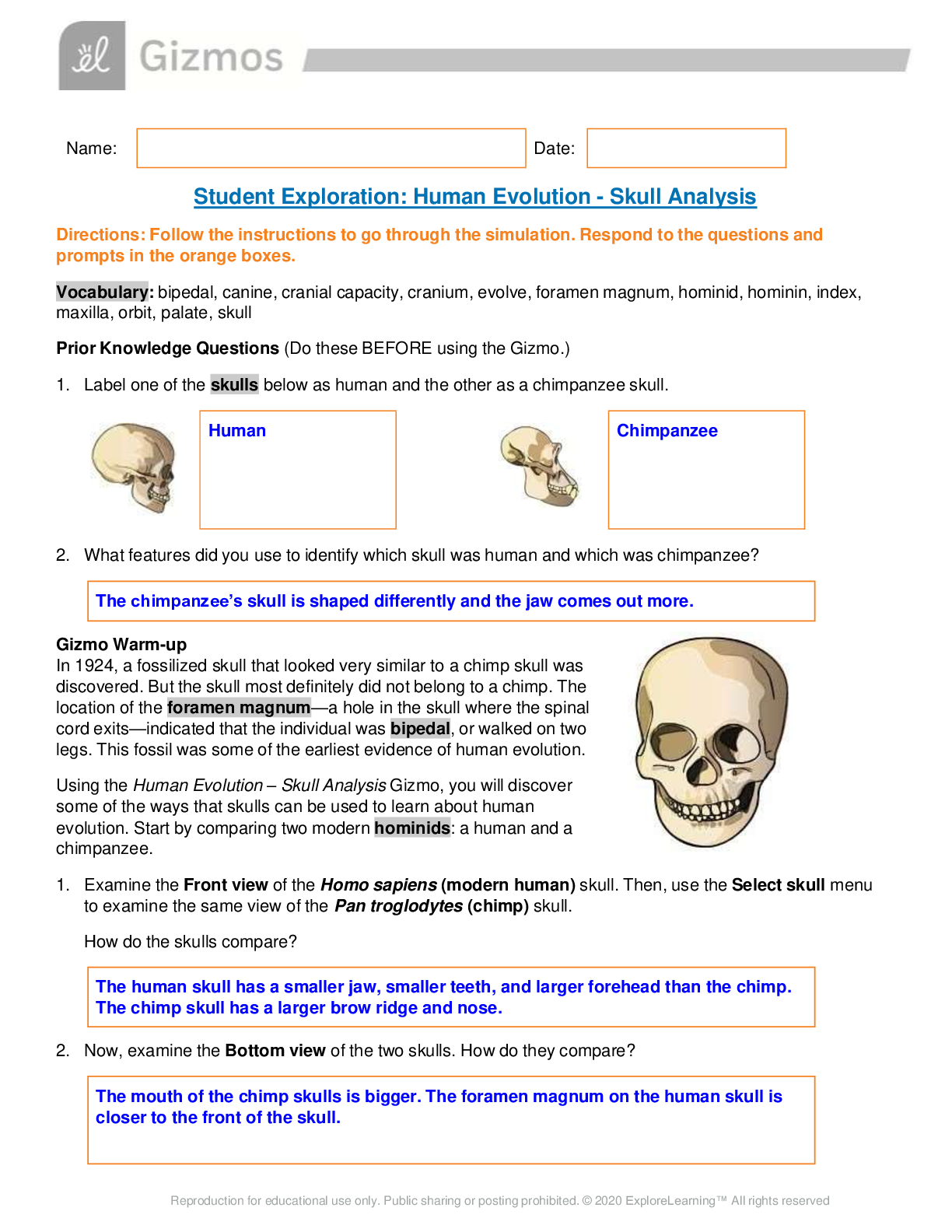
Reviews( 0 )
Document information
Connected school, study & course
About the document
Uploaded On
Aug 16, 2021
Number of pages
9
Written in
Additional information
This document has been written for:
Uploaded
Aug 16, 2021
Downloads
0
Views
212

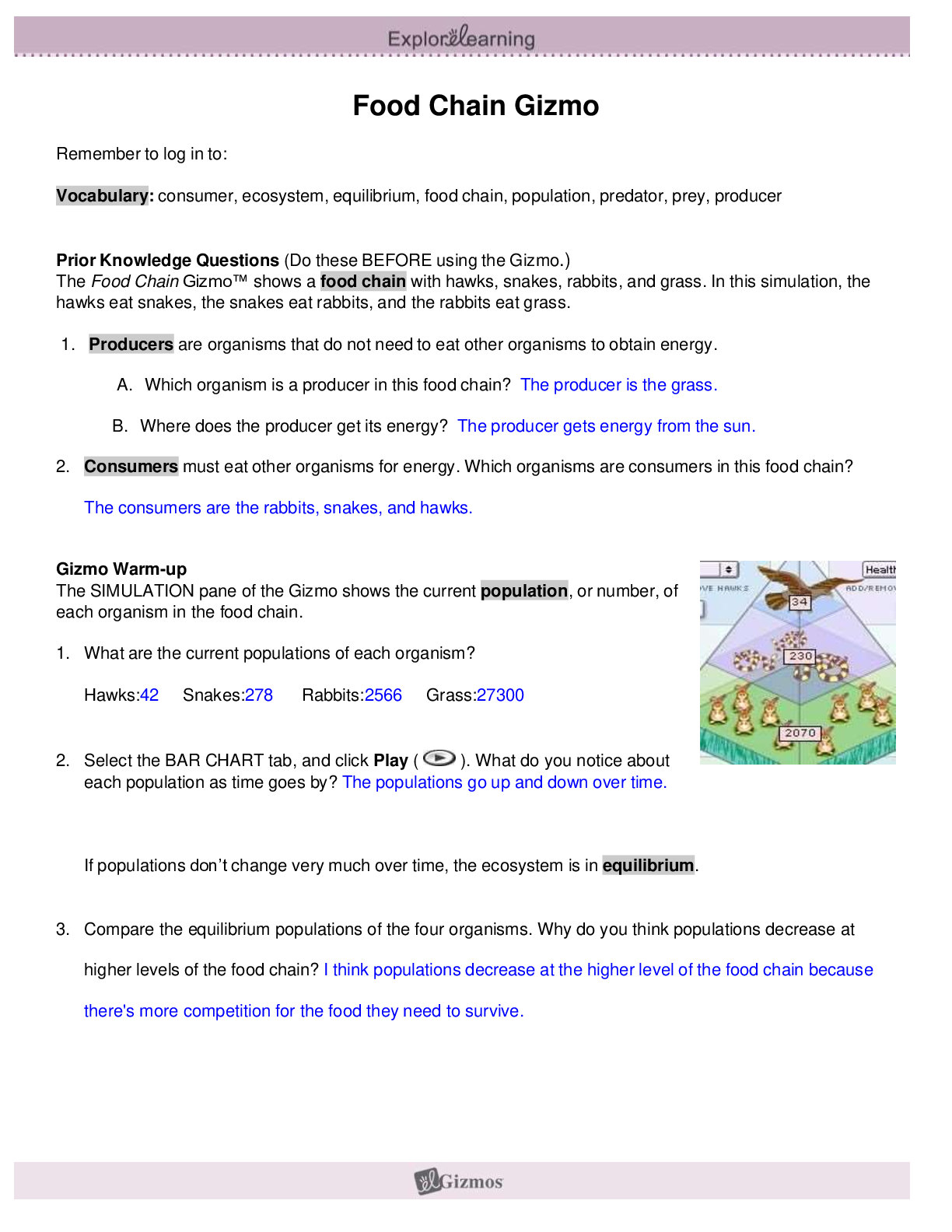





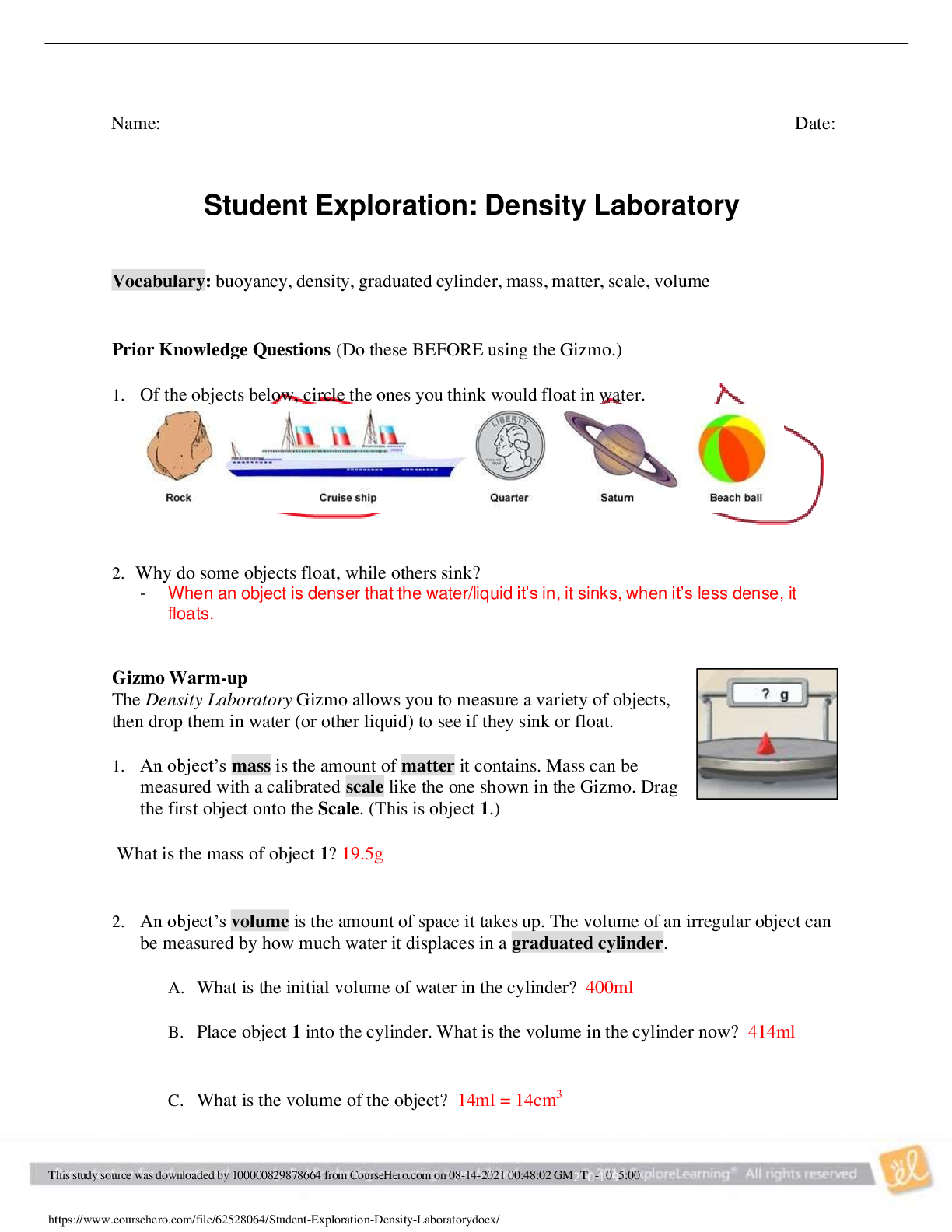



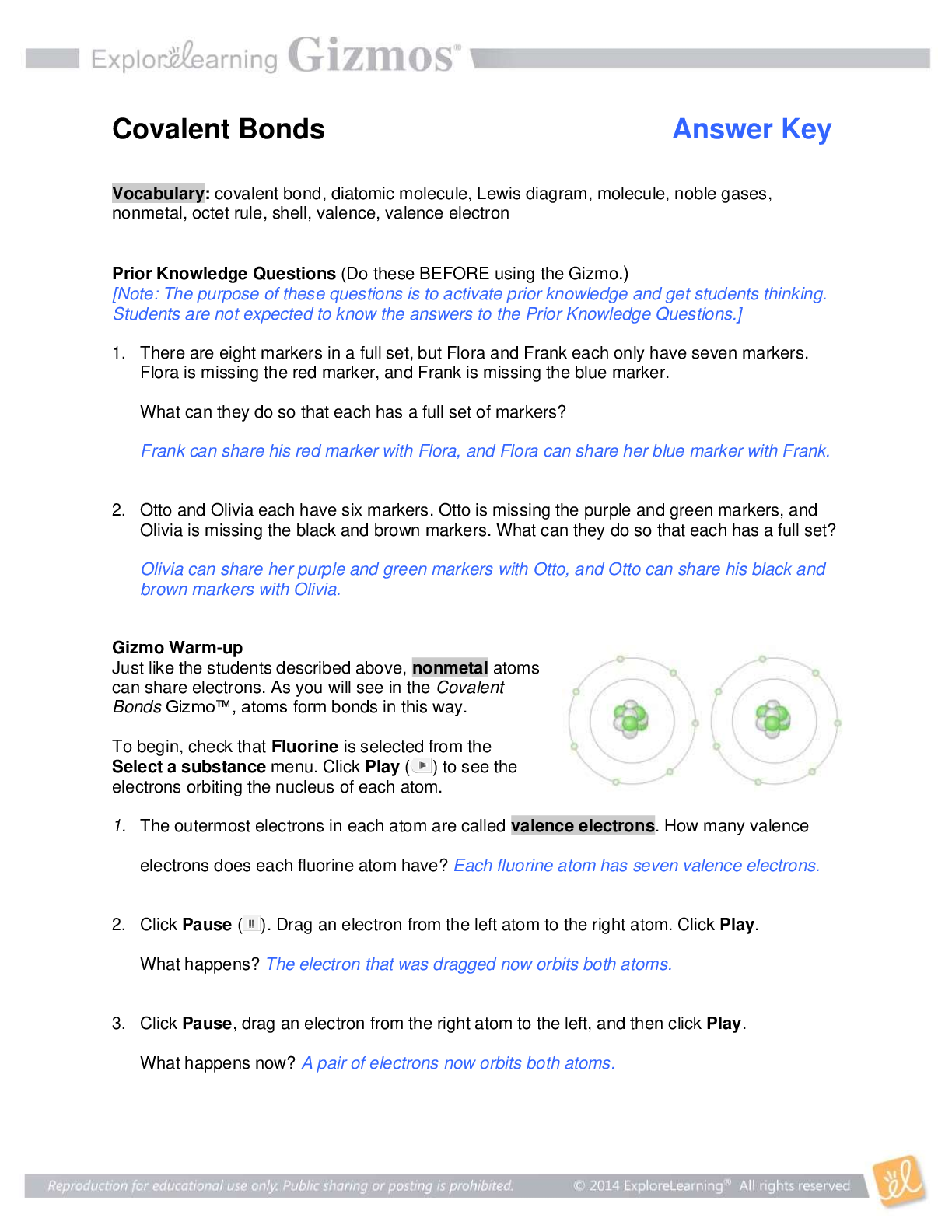
.png)



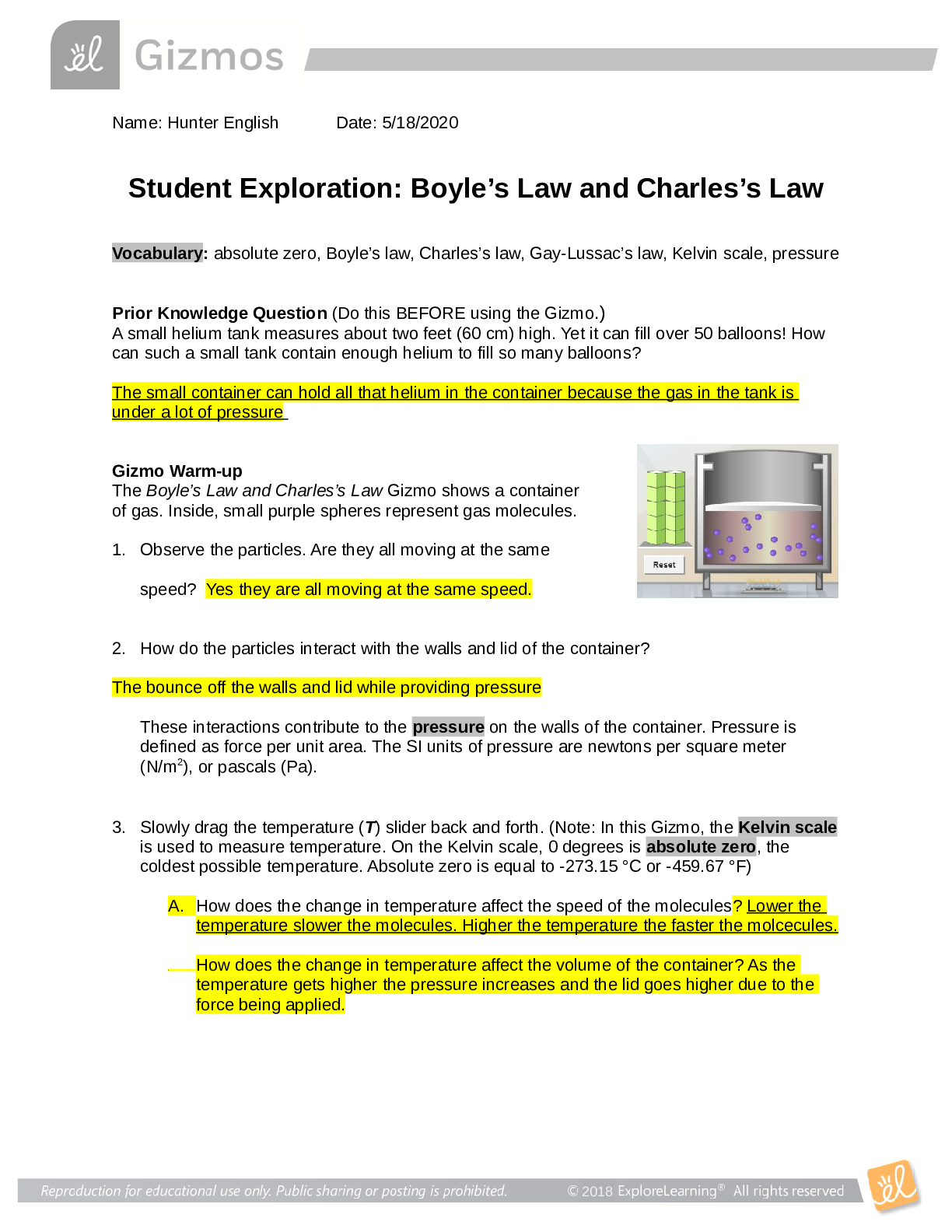
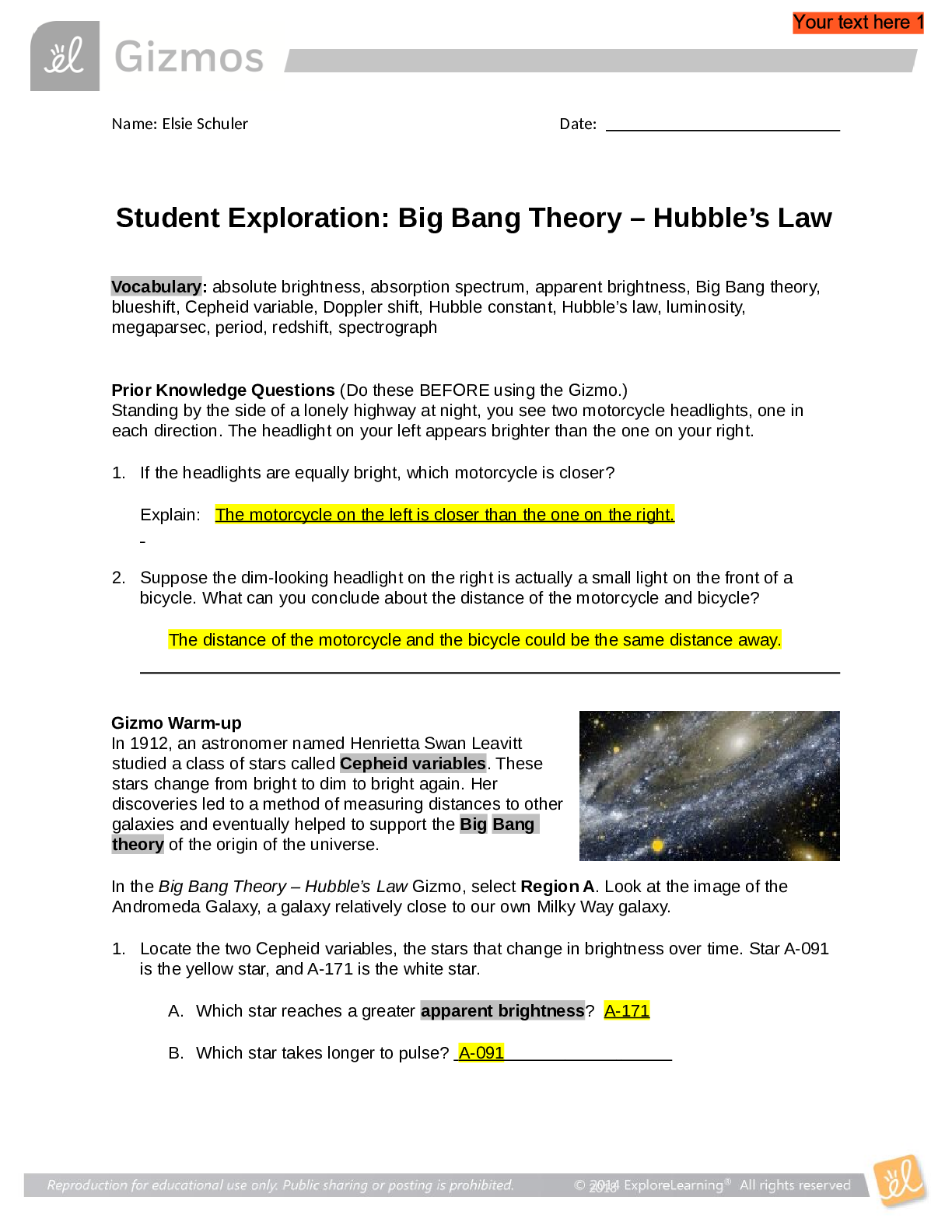


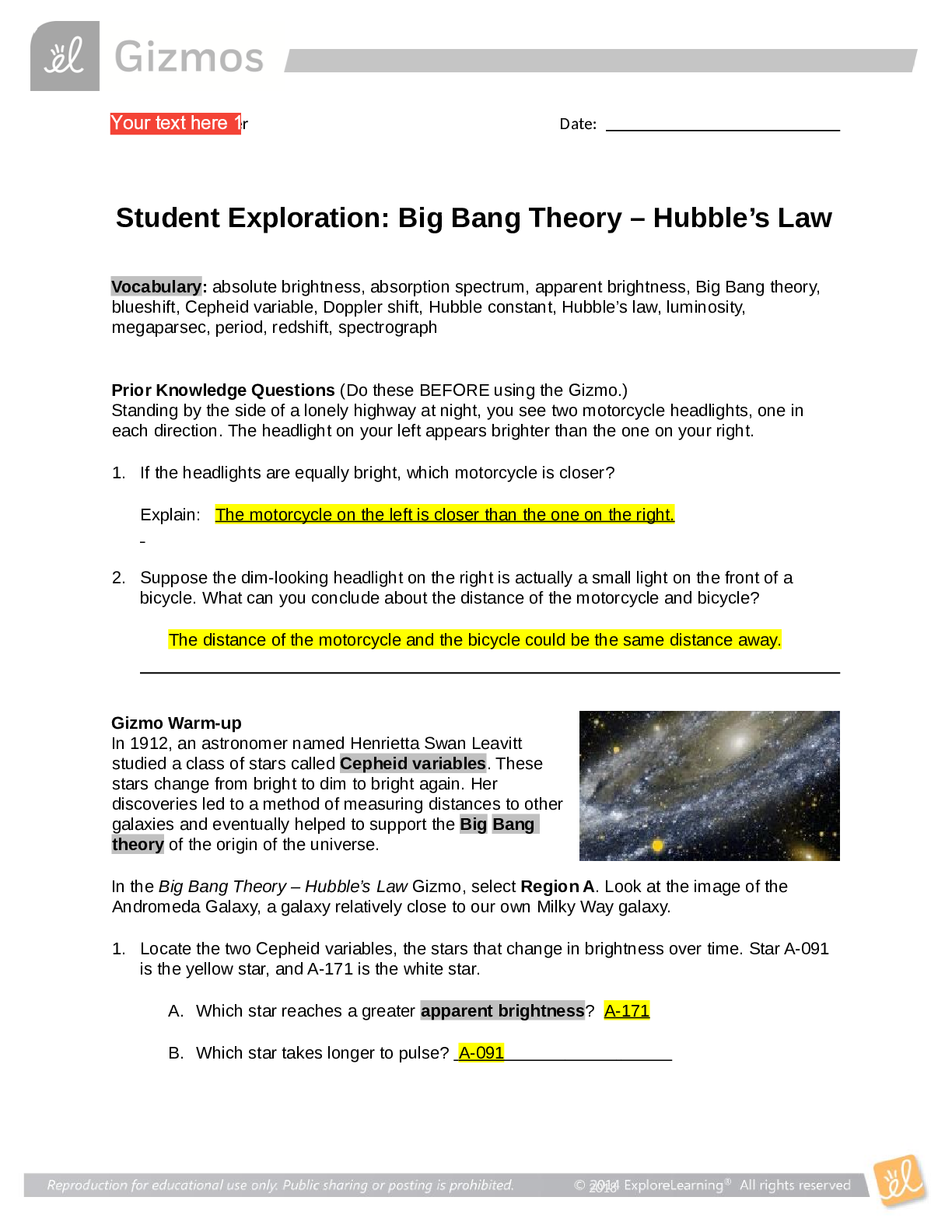
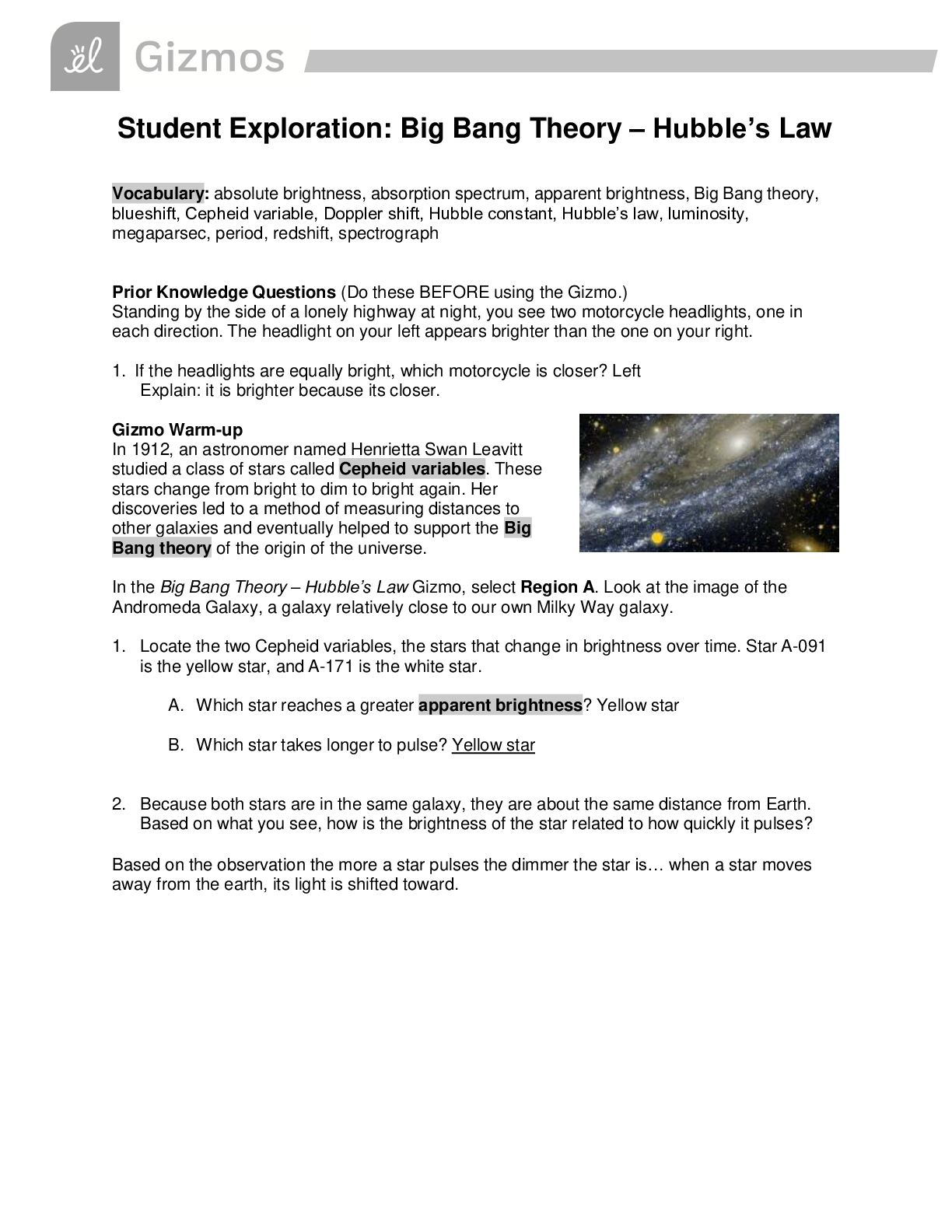

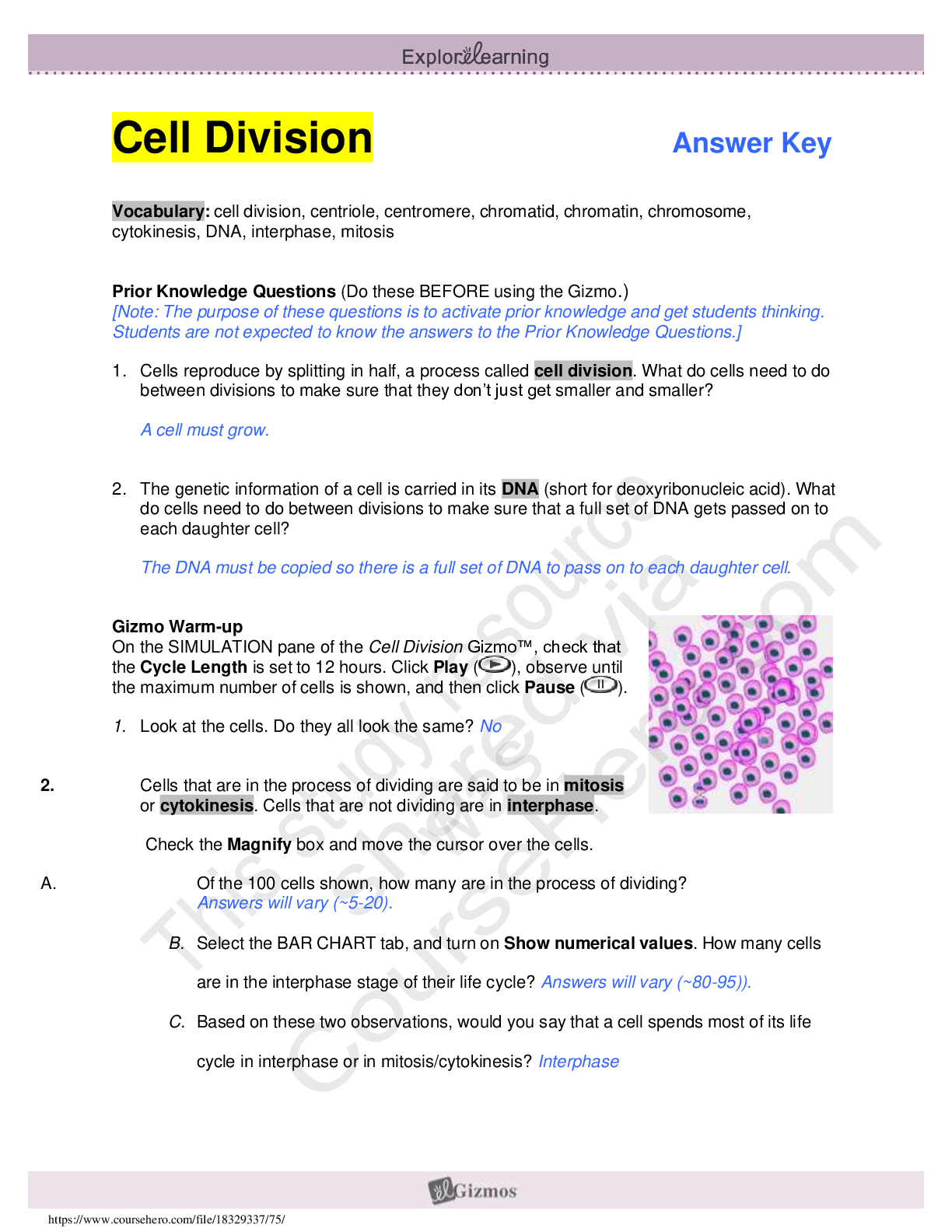
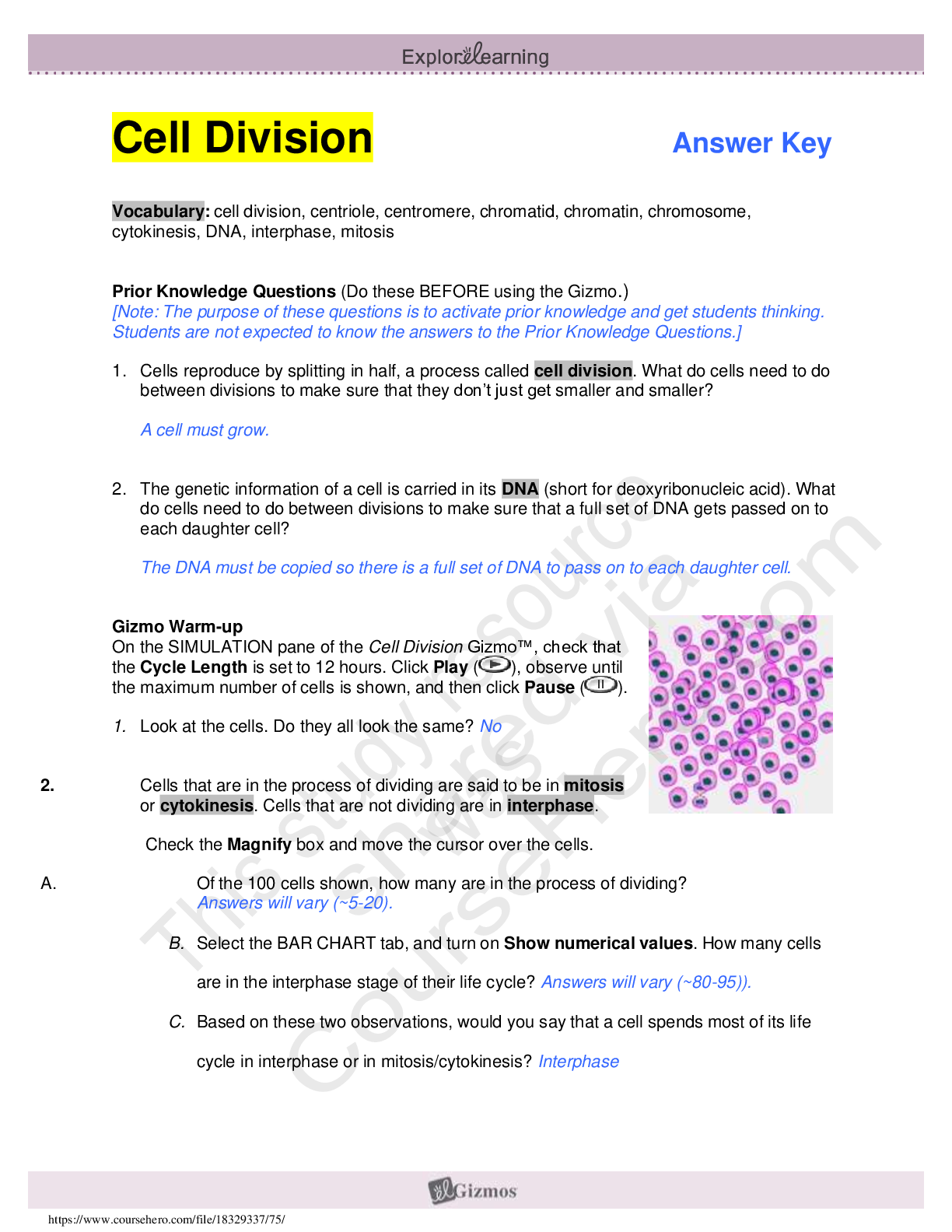
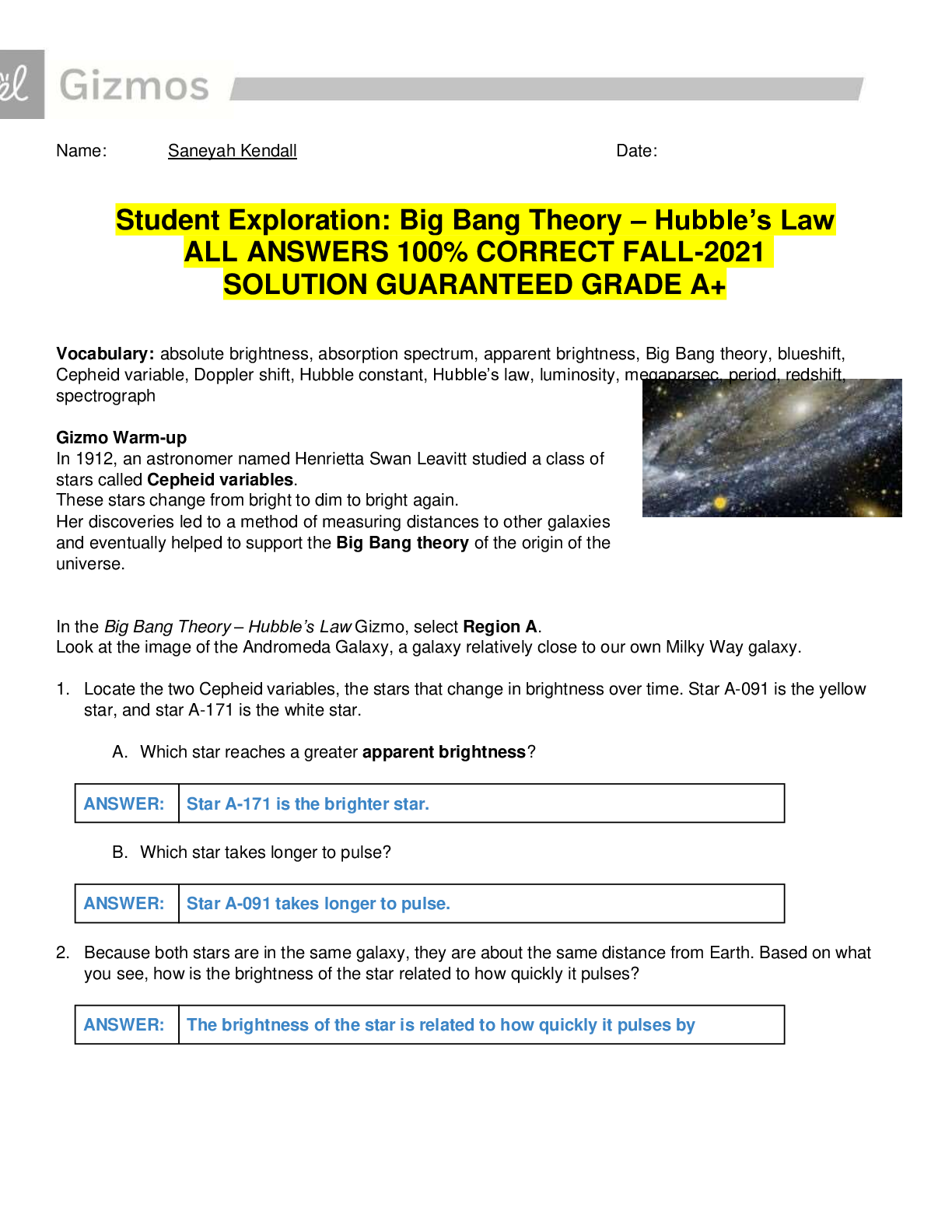

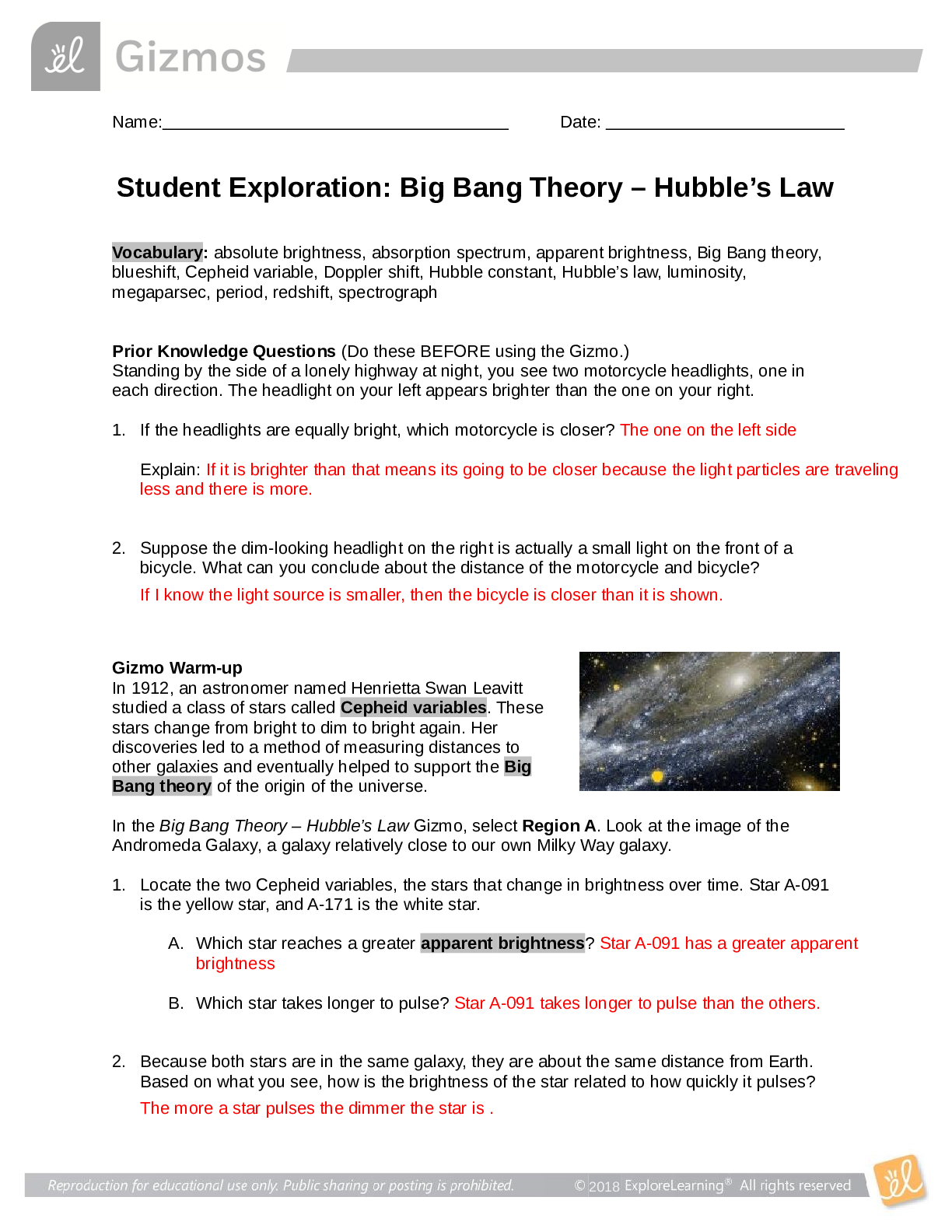
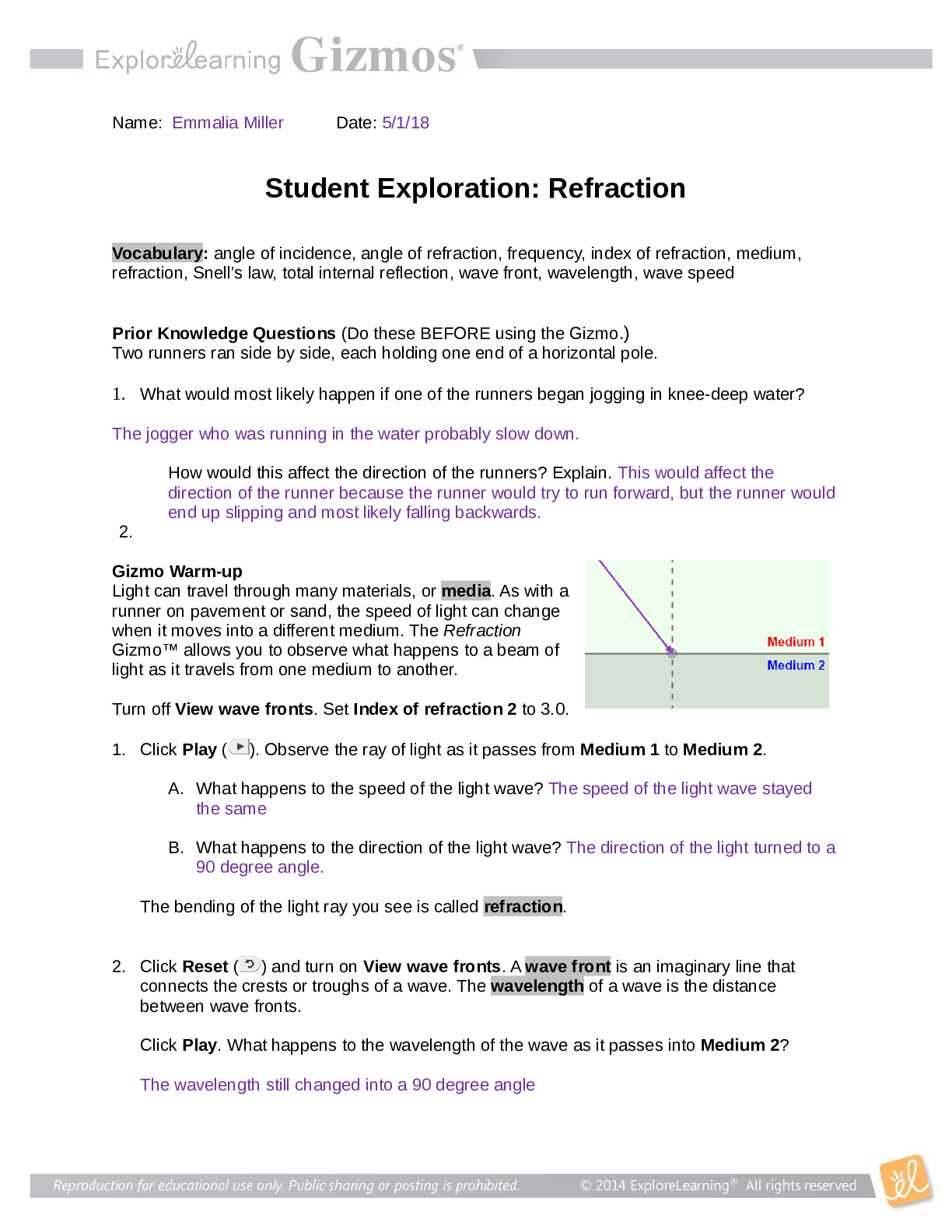

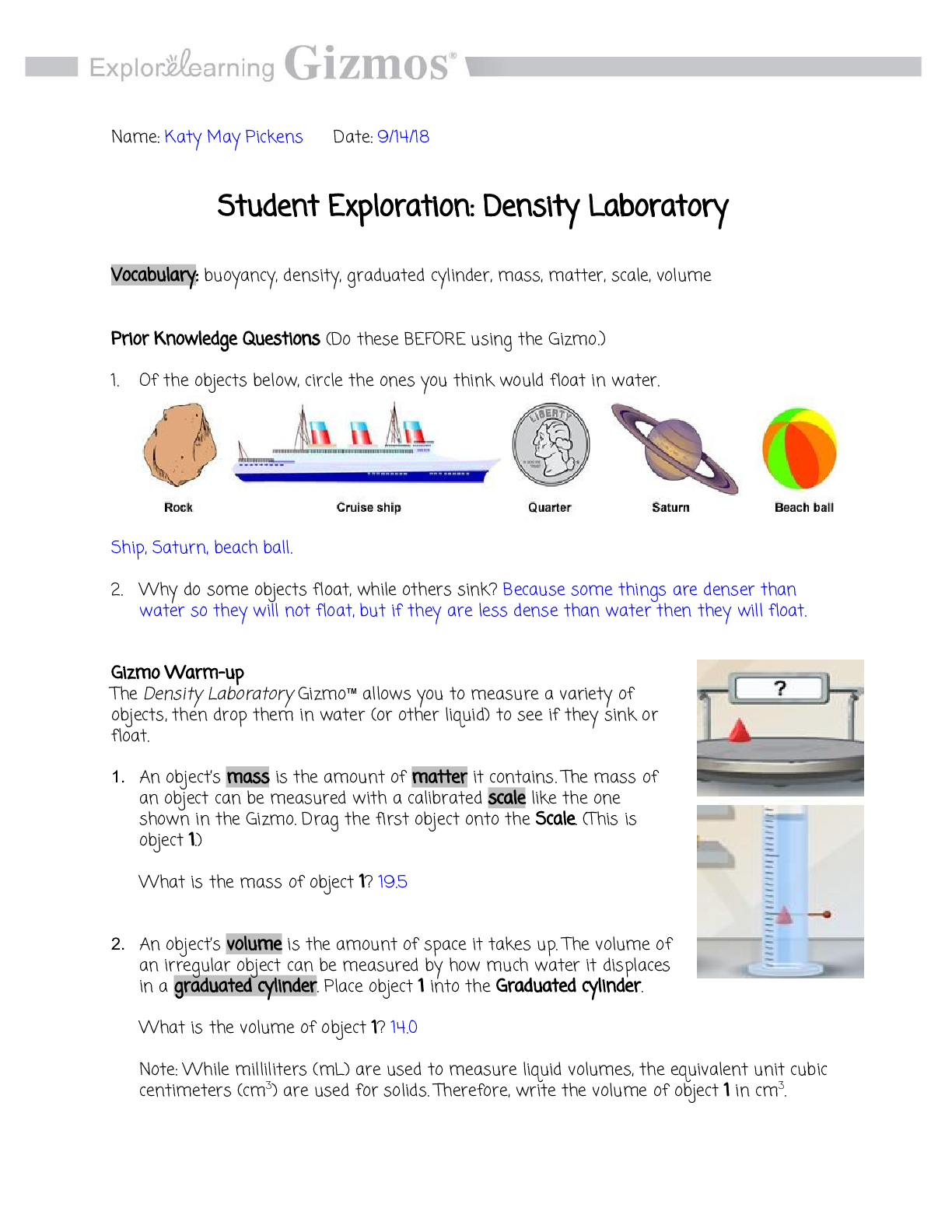
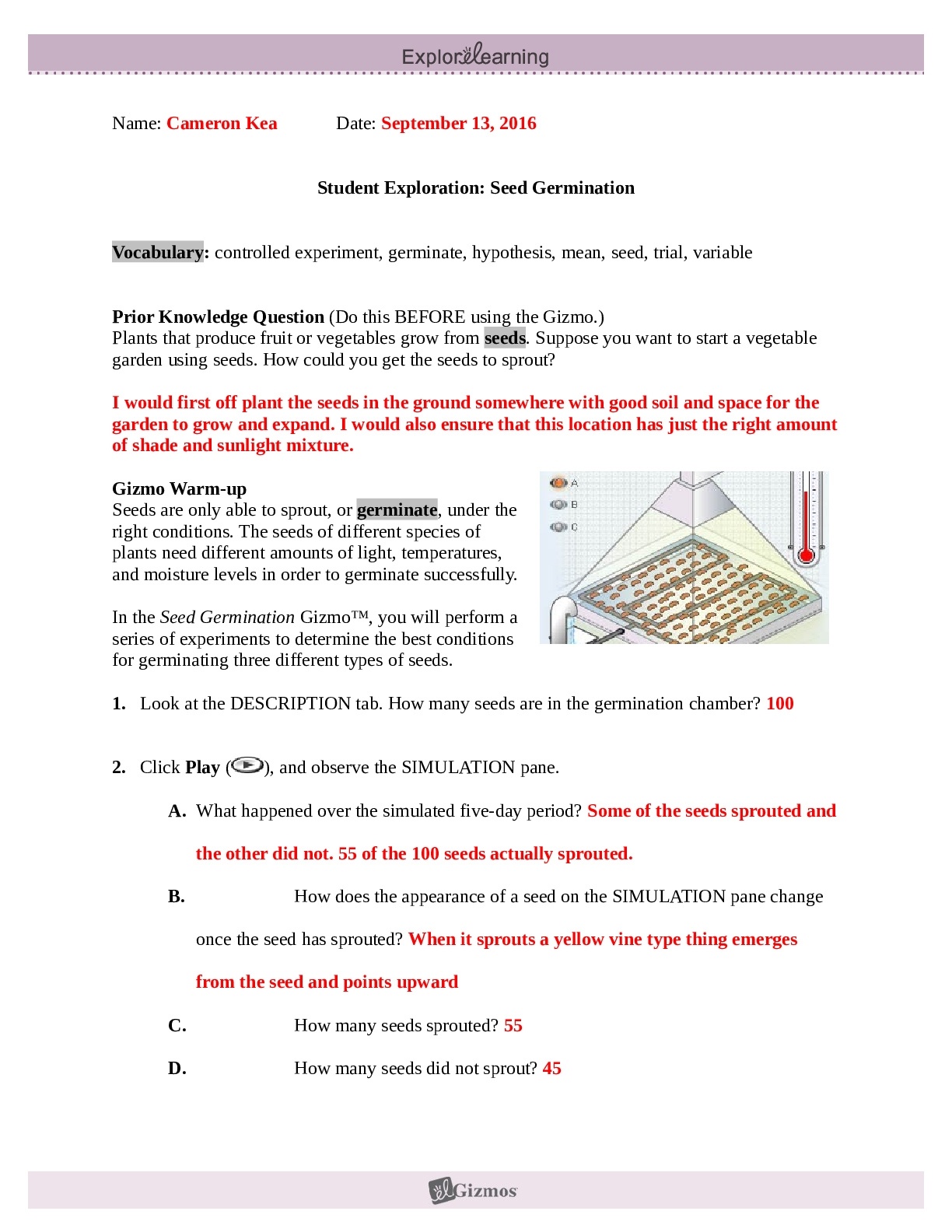

.png)

